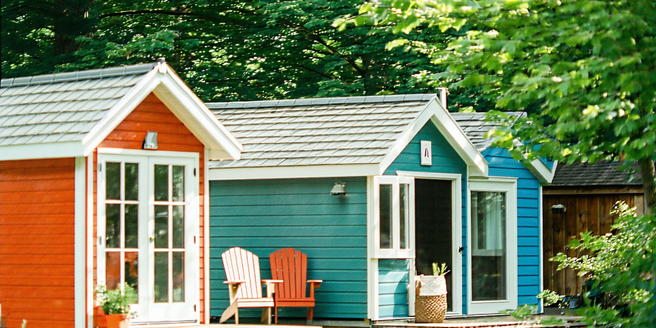Alternative Living Arrangements For Renters

Exploring Co-Living Spaces for Community-Oriented Renters
Co-living spaces are gaining popularity among renters seeking a sense of community and shared experiences. These living arrangements often consist of shared facilities such as kitchens, lounges, and social areas, which encourage interaction and collaboration. By living in these spaces, people have the opportunity to build meaningful relationships, reduce costs, and foster a strong sense of belonging. This lifestyle is particularly attractive to individuals who prioritize community involvement and shared values. Co-living arrangements can be found in urban and suburban locales, providing various options depending on one’s preferences. They offer a unique blend of privacy and community living, which appeals to those who desire both personal space and social connectivity. Overall, co-living spaces provide an innovative approach to living that aligns with the needs and values of community-oriented renters.
The Rise of Tiny Homes: Downsizing for Freedom
Tiny homes are becoming an increasingly popular choice for individuals looking to simplify their lifestyle and embrace minimalism. These compact living spaces, often less than 400 square feet, offer a unique opportunity to downsize possessions and focus on what truly matters. The movement is not just about reducing living space, but also about gaining freedom—financially and emotionally. Tiny homes are typically more affordable than traditional houses, allowing owners to reduce debt and invest in experiences. Their small size encourages a more sustainable lifestyle, with reduced energy consumption and a lower environmental impact. Additionally, tiny homes can be mobile, offering the freedom to travel and explore different locations. This lifestyle appeals to those seeking a balance between simplicity, sustainability, and adventure, redefining the meaning of home.
Van Life: Embracing Mobility and Minimalism
Van life is a lifestyle movement that is all about embracing mobility and minimalism. For many, it’s a way to break free from the constraints of traditional living and explore the open road. Vans converted into livable spaces offer freedom and flexibility, allowing individuals to travel at their own pace while maintaining the comforts of home. This lifestyle emphasizes minimalistic living, as space is limited and possessions must be carefully curated. The allure of van life lies in its potential for adventure and the ability to wake up to a new view every day. Additionally, it often encourages a more sustainable way of living, as individuals are prompted to conserve resources and live intentionally. Van life offers a unique blend of independence and simplicity that appeals to modern nomads.
House-Sitting: Living Rent-Free in Exchange for Caretaking
House-sitting is an alternative living arrangement where individuals can live rent-free in exchange for maintaining a homeowner’s property while they are away. This setup often includes responsibilities such as caring for pets, plants, and performing routine maintenance tasks. For renters, house-sitting presents a unique opportunity to explore different neighborhoods or cities without the commitment of a lease or the cost of rent. It allows for flexibility, as house-sitters can move from one property to another based on their availability and preferences. Furthermore, it provides a chance to experience diverse living environments and meet new people. House-sitting can also be a stepping stone for those saving for long-term housing solutions, all while enjoying the comfort of a fully furnished home.
Intentional Communities: Thriving in Shared Environments
Intentional communities are deliberate residential communities designed to have a high degree of social cohesion and teamwork. These communities often form around shared values, interests, or goals, such as sustainability, spirituality, or cooperative living. By residing in an intentional community, individuals can thrive through collective decision-making and resource-sharing. Members typically participate in community activities and governance, fostering a strong sense of belonging and mutual support. This lifestyle appeals to those who seek deep connections and a sense of purpose. Intentional communities can be found in rural and urban settings, offering a range of living arrangements from cooperative houses to eco-friendly villages. They provide a unique environment where individuals can collaborate, innovate, and contribute to a supportive and harmonious living space.
Eco-Villages: Sustainable Living in Harmony with Nature
Eco-villages are communities designed to prioritize sustainable living and harmony with the natural environment. They incorporate eco-friendly technologies and practices, such as renewable energy, permaculture, and water conservation, to minimize their ecological footprint. Residents of eco-villages are often committed to a lifestyle that reduces environmental impact and promotes self-sufficiency. These communities encourage collaboration and shared resources, allowing individuals to live in a way that aligns with their environmental values. Eco-villages can be found worldwide, each with unique approaches to sustainability and community living. This lifestyle offers an opportunity to engage with like-minded individuals and contribute to a more sustainable future, appealing to those who wish to live in balance with nature while fostering a strong community ethos.